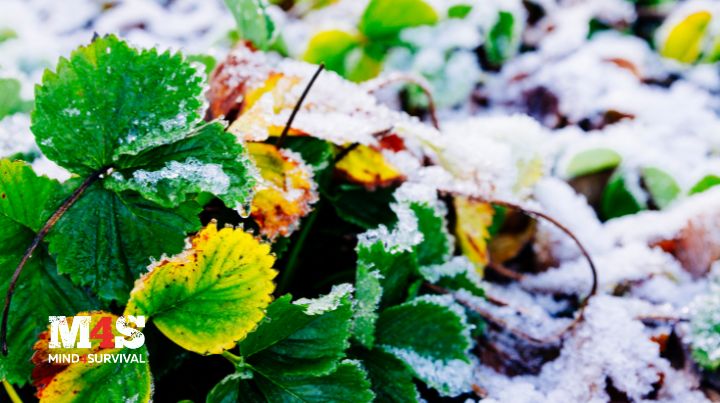Peas, potatoes, carrots, onions, leeks, and celery are not disturbed by temperatures that dip slightly below freezing. I typically plant my peas and potatoes in the spring, so they get harvested long before fall frosts. A light frost will hurt the foliage of a potato plant, but as long as it doesn’t dip below about 28, as soon as it warms up, the potato plants will recover.
Onions and Leeks
Onions and leeks will suffer foliage damage during a hard frost, so once it’s below 28, I bring them in. Leeks can be buried in straw and covered with a bucket if the temperatures dip below 28 for a longer period. I have left leeks like this for a few weeks at a time. The foliage tips will probably not look good, but the bottom portion of the plant is usually fine.
Carrots and Celery
Carrots and celery should actually not be harvested until they’ve experienced cooler temperatures for the best flavor. As soon as the plants are exposed to freezing temperatures, starch within the plants begins converting to sugar, making frost-touched carrots and celery particularly delicious.
If I have ample storage, I will usually harvest carrots when it looks like temperatures will be below freezing for a day or more, or if the temperature will drop below 25. If I’m short on storage space, which sometimes happens in the fall, I will cover the carrots with straw and then harvest as needed. In my area, average day/night temperatures are roughly 50/20 in November and 45/15 in December. The carrots definitely need to be inside by December, but covering them with straw can buy me a few extra weeks in November to get organized.
I don’t know anyone who grows celery in my part of the country, but celeriac does well. I can actually treat the celeriac like carrots. The foliage will be injured by hard (below 28) frosts, so when it is time for that weather, I cut off the foliage and dry it for use in soups throughout the year. Then I pack the roots in the garden with straw, and as soon as temperatures are consistently below 25 at night, I put the celeriac in the cellar.
Hardy
Some plants just love the cold. And fortunately for us, some of these plants are the most nutritious, too.
Rutabagas grow really well in my climate. Assuming they survive the onslaught of grasshoppers in the summer, they are typically pretty trouble-free and form the base of stews throughout the winter months. The foliage will start to freeze if temperatures drop below 28, but the roots are fine until the soil temperature around them is about 24. This gives me a lot of wiggle room; in my climate, I can usually just pull them as needed until December, when nighttime temperatures regularly drop below 20. After that, I can put them in the root cellar, where they will keep for a few more months.
Read the full article here
